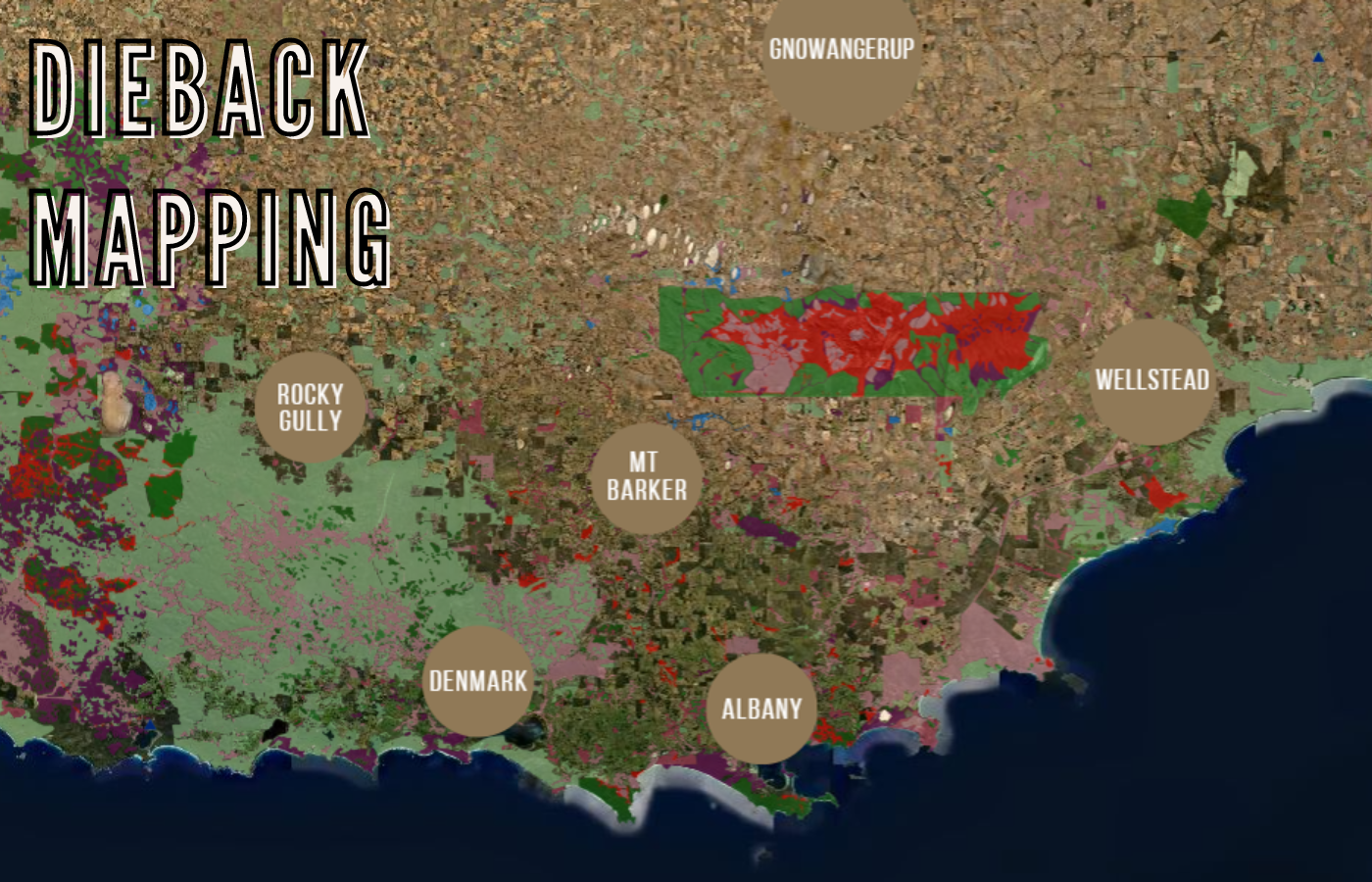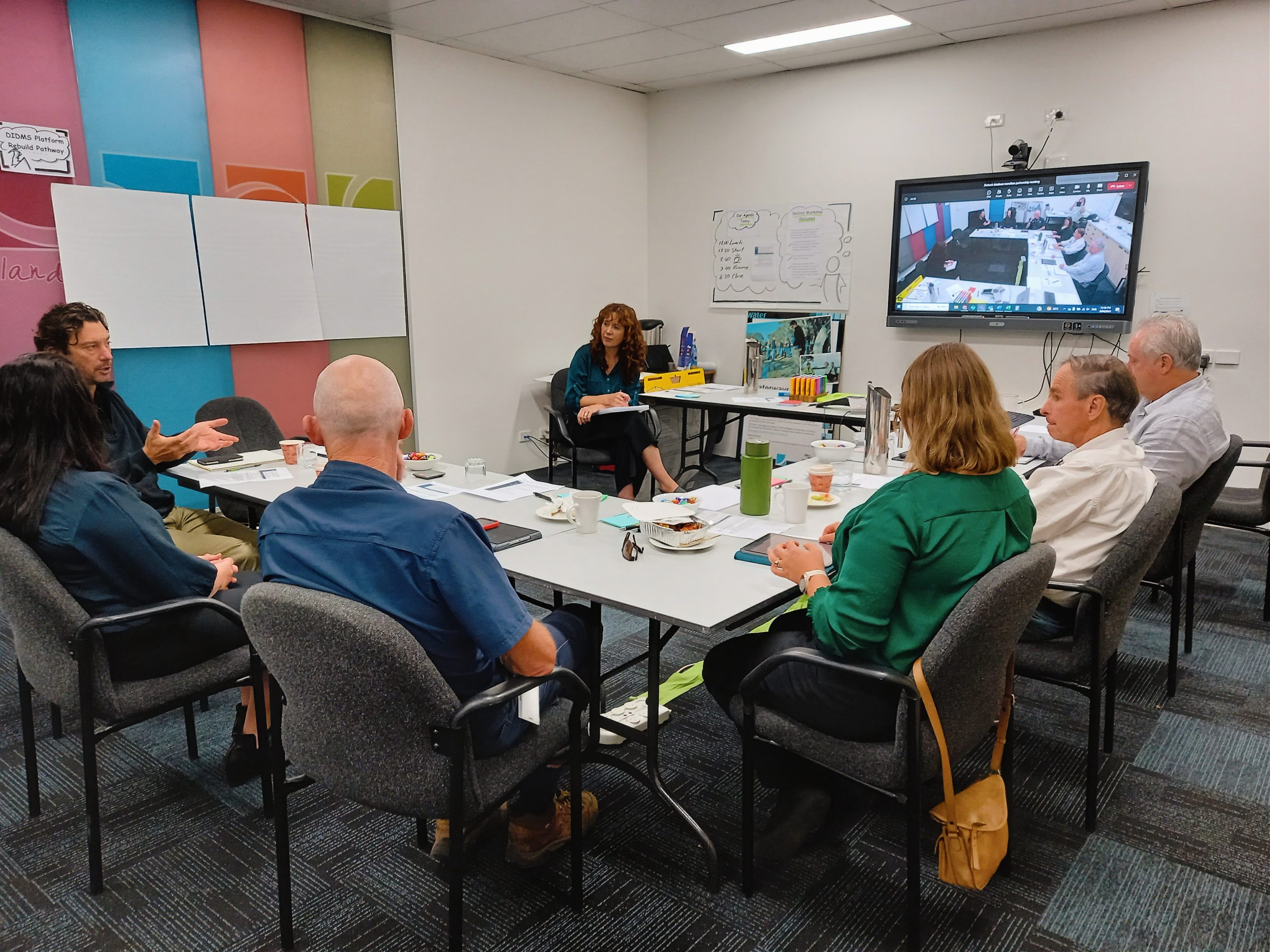From the desk of Natalie, Project Leader Dieback.
Did you know there is no cure for Phytophthora dieback? The plant disease, predominantly Phytophthora cinnamoni, is a highly destructive, microscopic, soil-borne organism that causes negative, permanent and irreversible impacts to native ecosystems, including reduced biodiversity and loss of habitat for native animals. Dieback was introduced to Western Australia in the early 1900s and to date, it has infested hundreds and thousands of hectares in the southwest. The easily transmissible plant pathogen leads to disease and death in susceptible plants. Dieback is spread by moving infected soil and plant material.
Early detection and mapping of Phytophthora dieback infestations are important for mitigating the spread of disease. Since 2005, South Coast NRM has maintained the WA dieback mapping database – Dieback Information Delivery Management System [DIDMS] to improve disease management.The image above is a sample of DIDMS mapping, with dieback infestations shown in red.
The DIDMS database has a considerable legacy but is out-of-date and needs to move to a new platform.
South Coast NRM and the Dieback Working Group are excited to announce that they have formed a partnership to find a new home for DIDMS. The collaboration between the two groups will maintain DIDMS into the future and work together to advocate for support and investment to combat the spread of dieback disease in WA.
This project receives funding from the Western Australian Government’s State NRM Program.
You can register for DIDMS at or contact Natalie Reeves, Projects Leader at South Coast NRM (e) natalier@southcoastnrm.com.au or 9845 8537 for further information.


